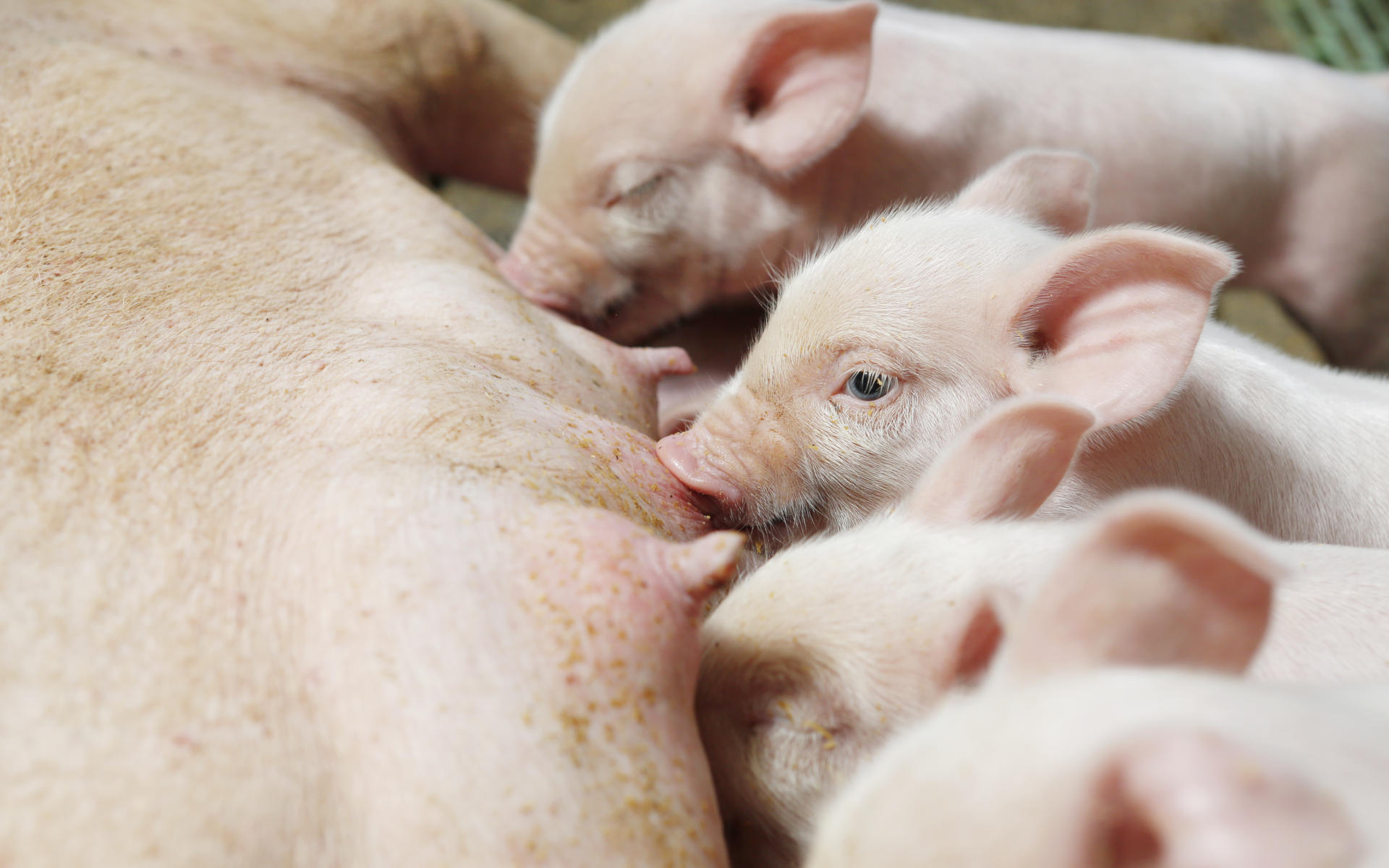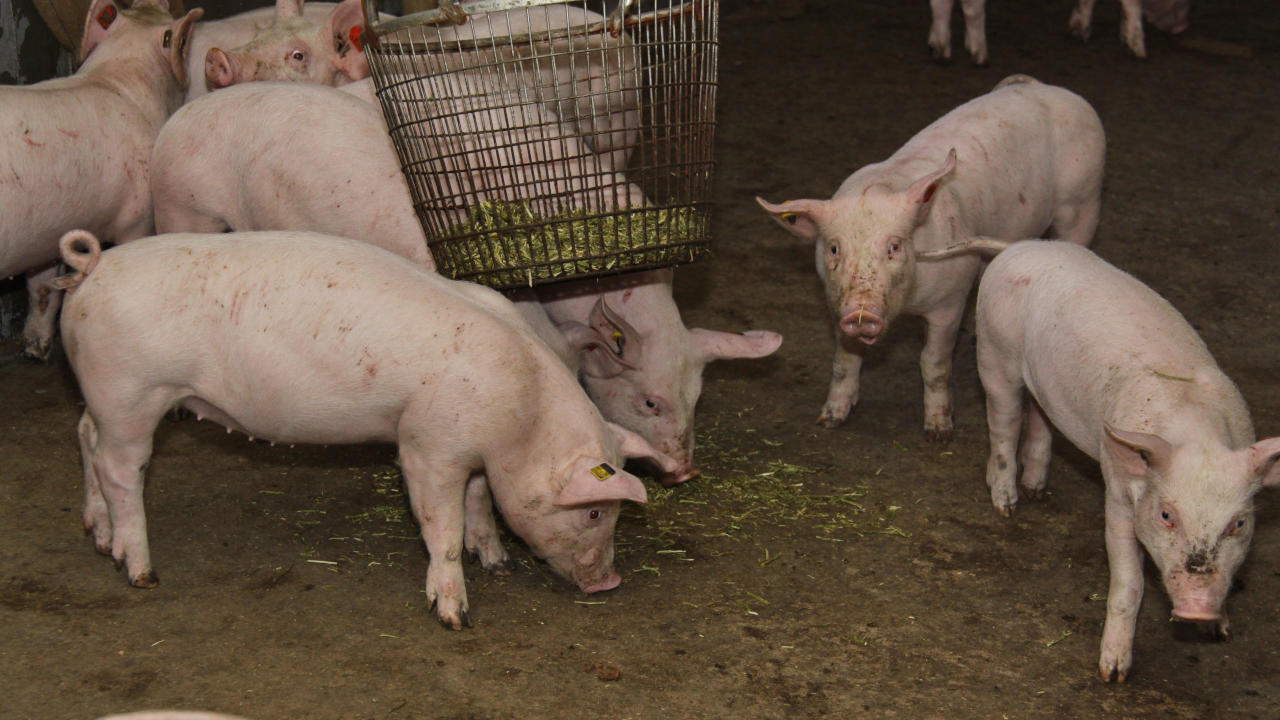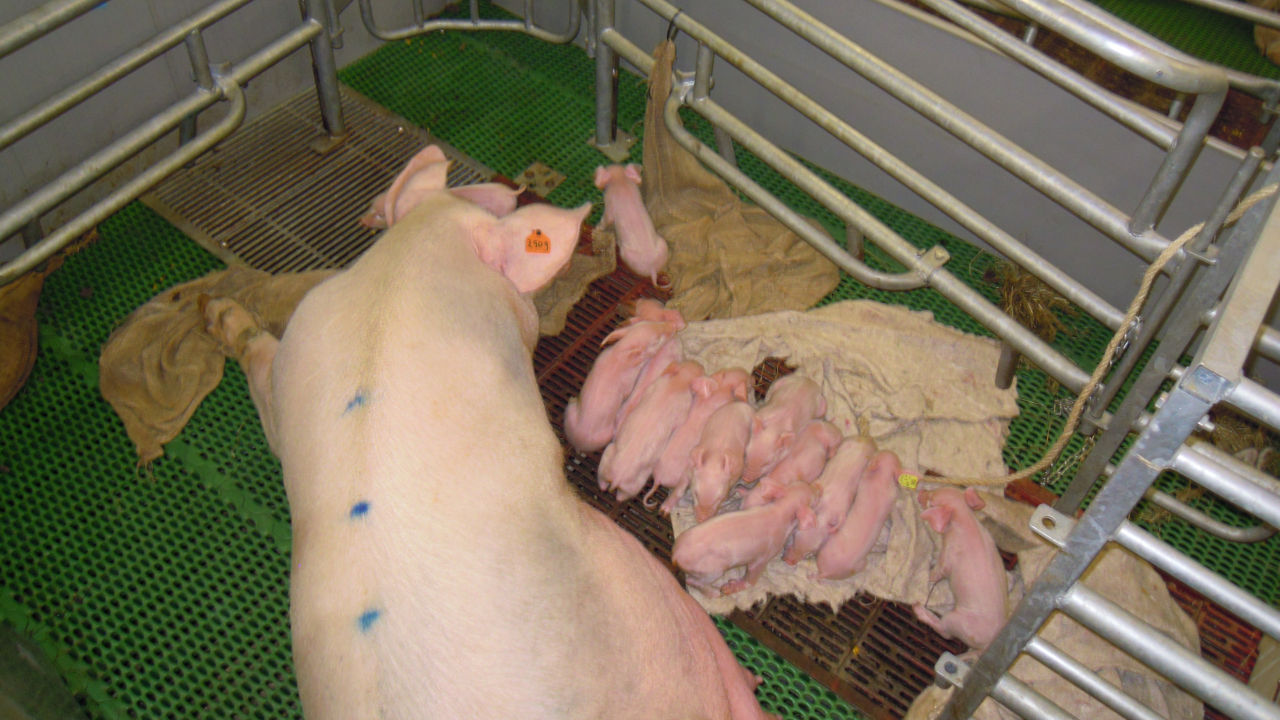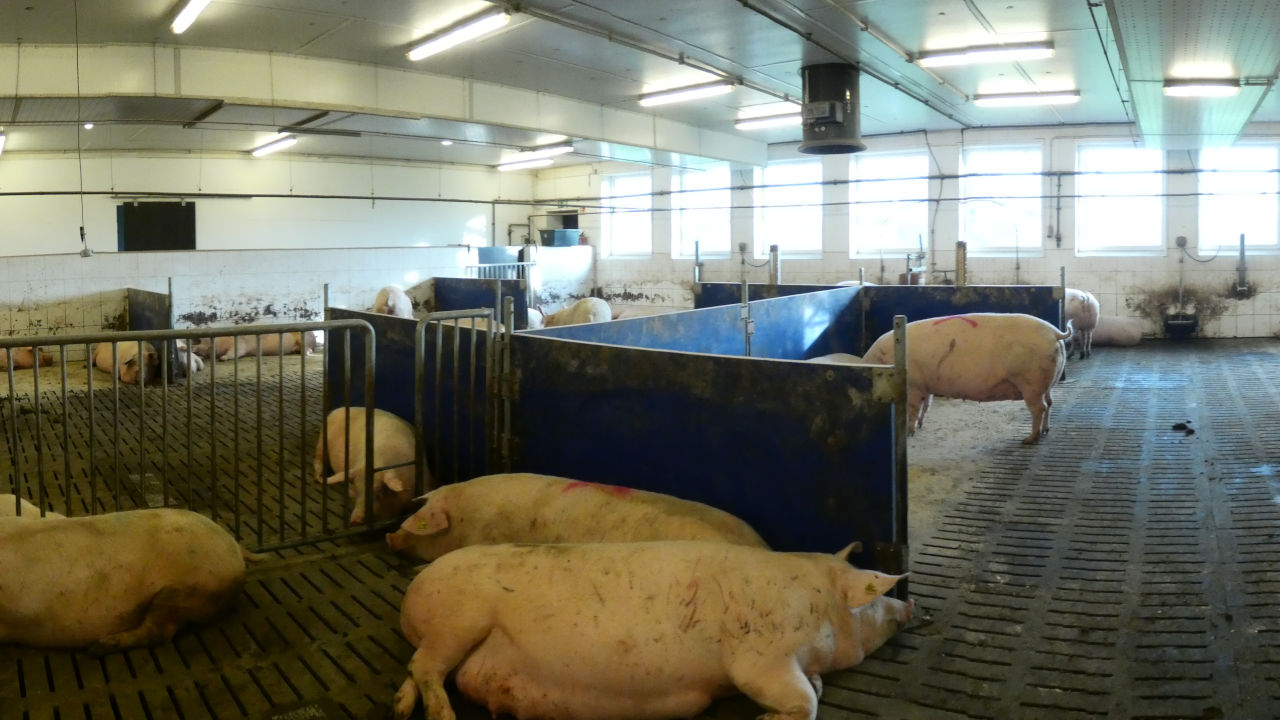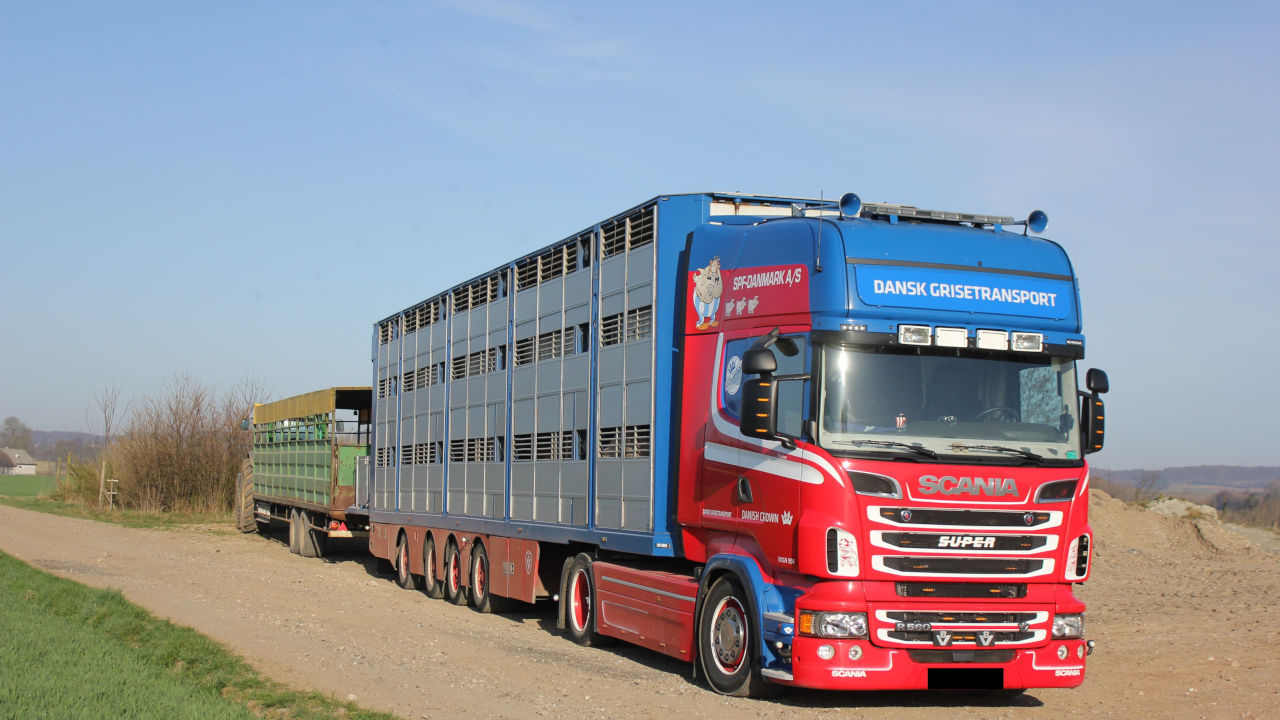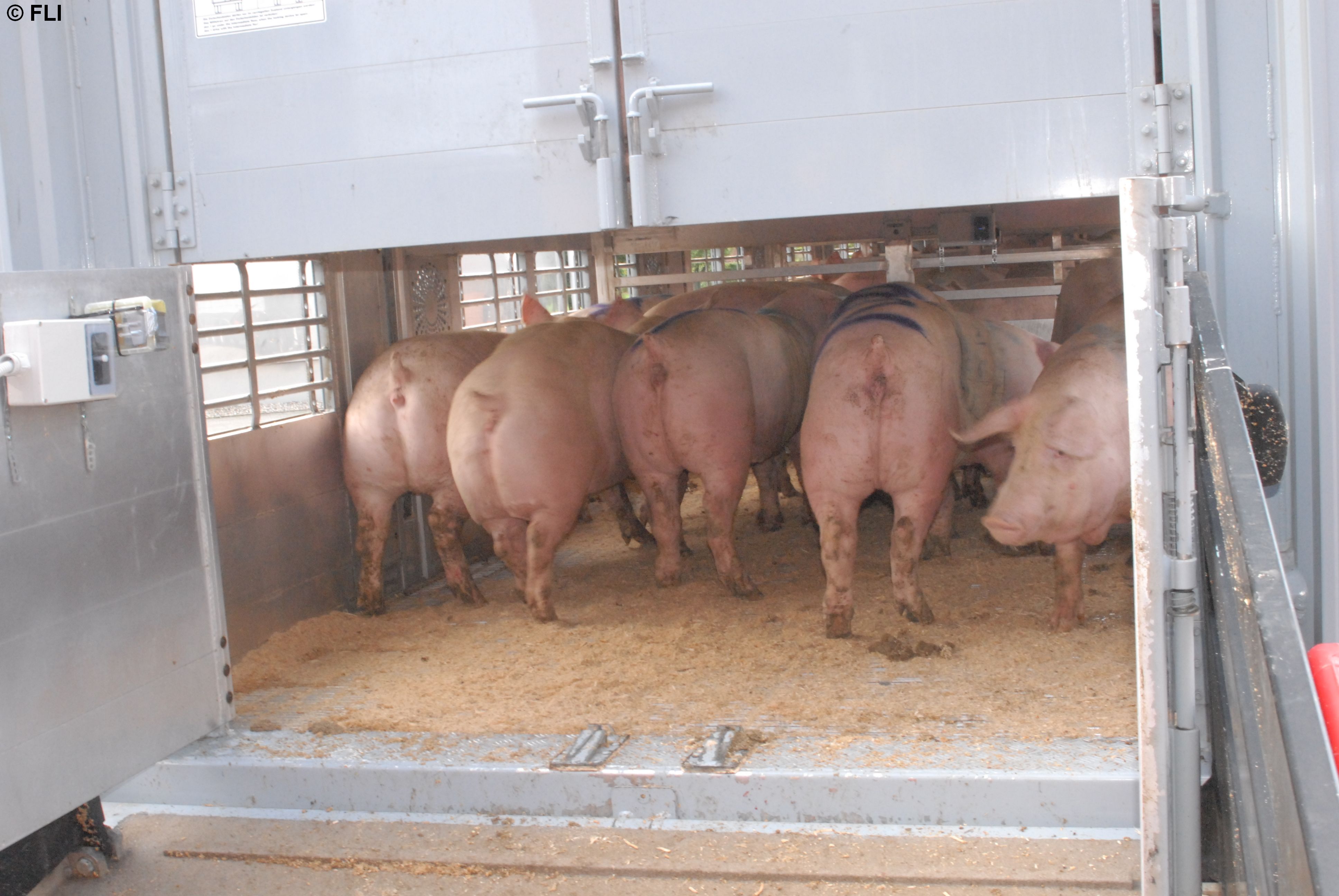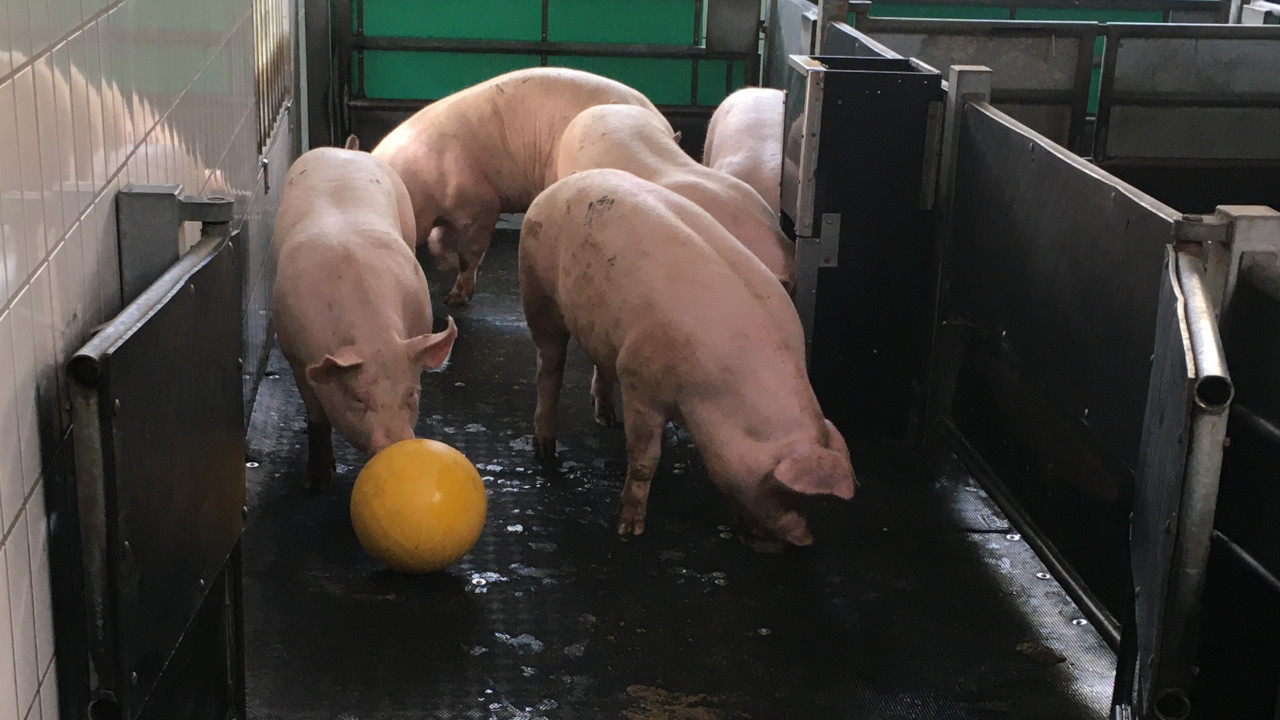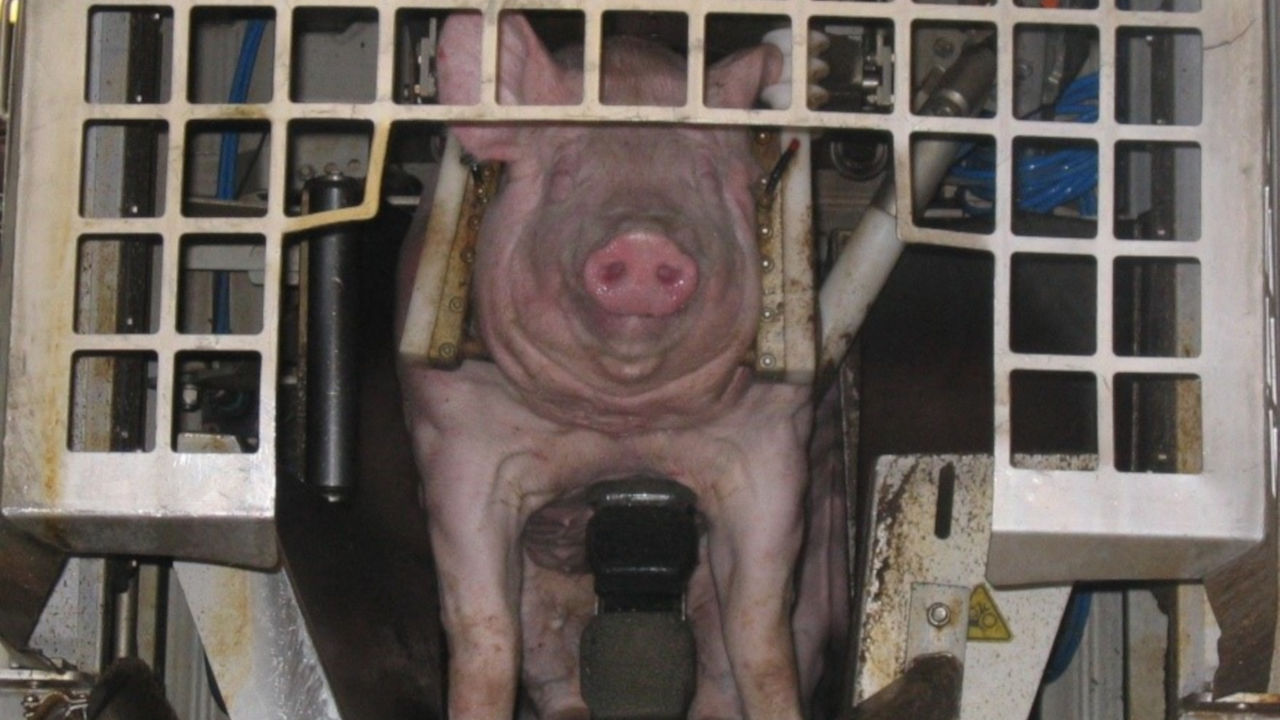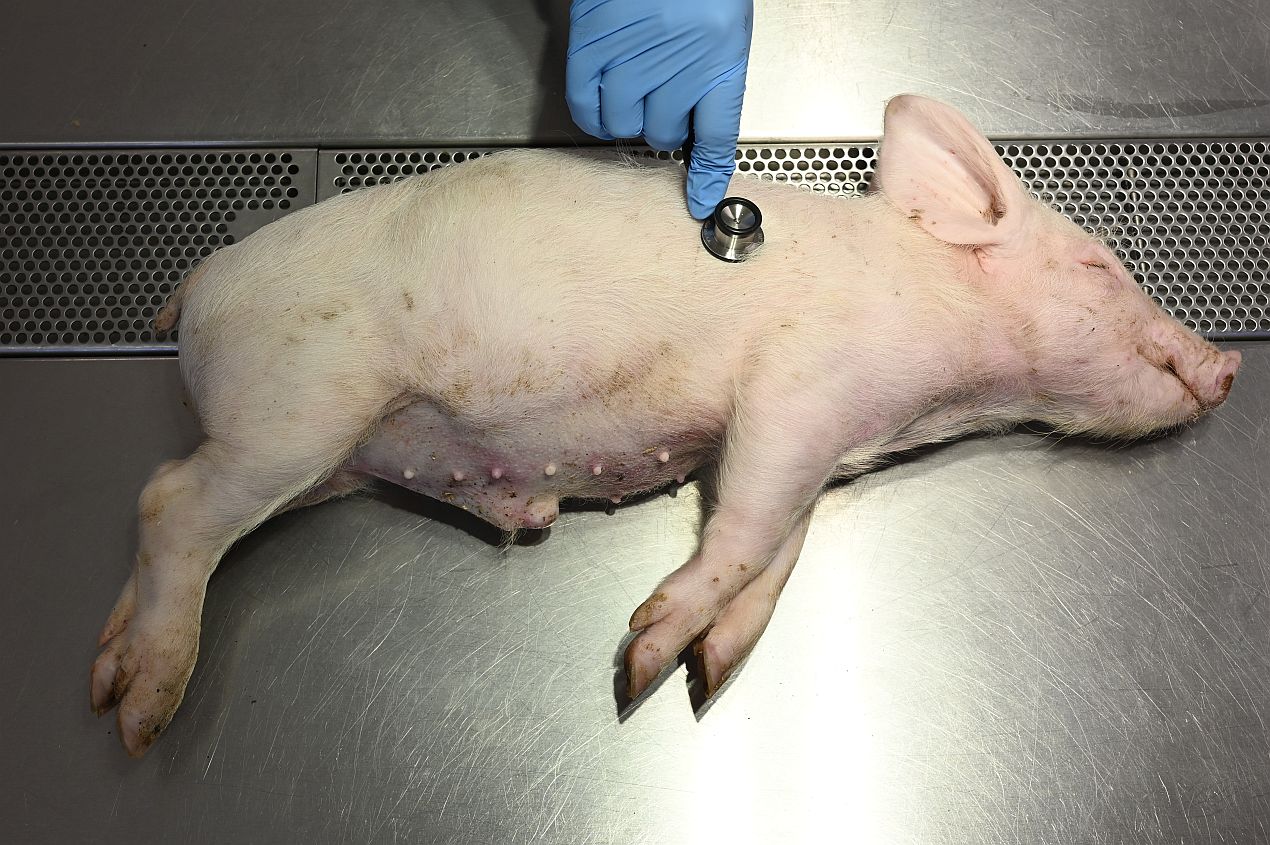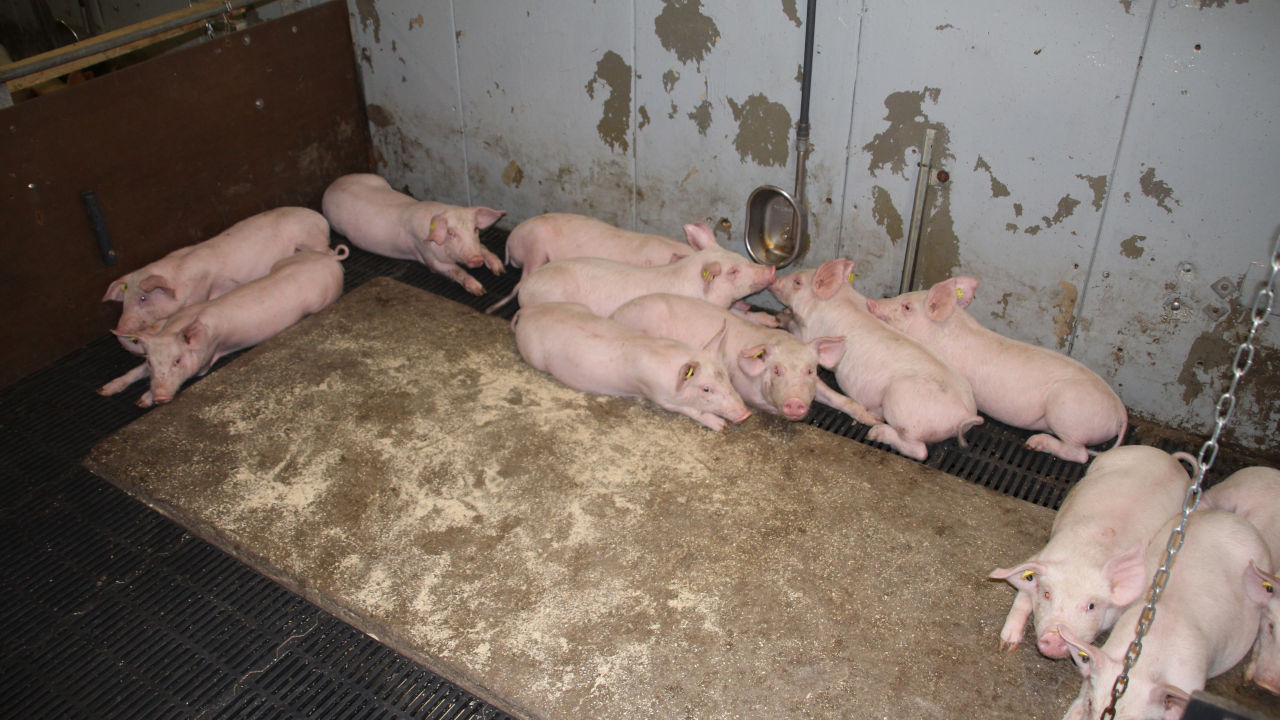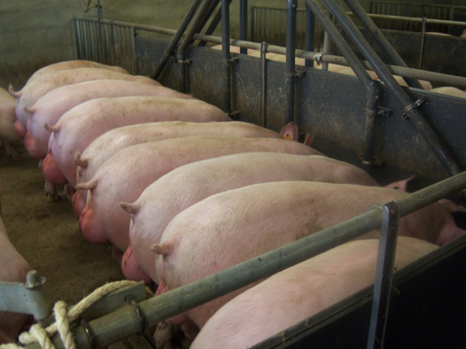Gabriele Mörixmann, a German Farmer, shows in the video her active stall for fatteners, which provides different adequate enrichments. She is housing pigs with intact tails. The stall also provides a darkened lying area and hospital pens. In standard housings pigs live mostly in barren environments. One risk factor for tail biting is inadequate environmental enrichment. Environmental enrichment should provide possibilities for performing exploration, foraging and comfort behaviour.
Unfortunately, your cookie settings do not allow videos to be displayed. Please check 'Marketing' in
your cookie settings and reload this page to display the video.
Adequate enrichment - Smart4Life
bmel


